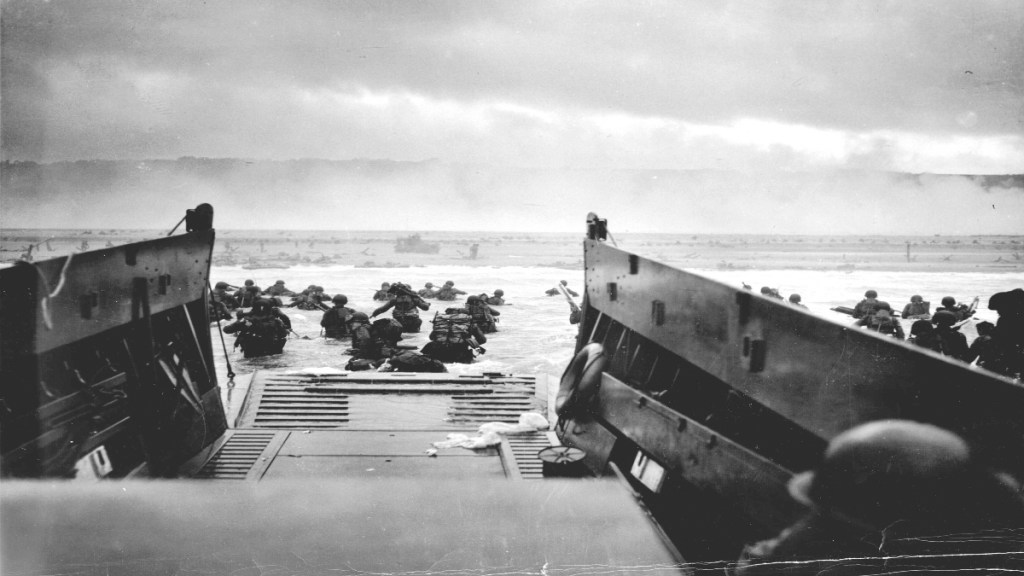-By Ajey Lele
June 6, 2024, will commemorate the 80th anniversary of the D-Day landings along the Normandy coast during World War II. The skies above Normandy were once filled with the fury of war. 80 years back on this D-day Allied troops had contributed towards Adolf Hitler’s downfall and the liberation of Europe from his tyranny.
June 6, 1944 (D-Day) marked the largest amphibious invasion in the history of warfare. This operation was codenamed as Operation Overlord. It required the Allies to utilize over 5,000 ships and landing craft to disembark more than 150,000 troops onto five beaches in Normandy. It was meticulously planned, with a command team led by American General Dwight D. Eisenhower. This team was formed in December 1943 to devise the strategy for naval, air, and land operations, necessitating extraordinary cooperation between international armed forces.
The invasion spread-out in two key phases: an airborne assault and amphibious landings. Just after midnight on June 6, 1945 over 18,000 Allied paratroopers were dropped into the invasion area to provide tactical support for infantry divisions on the beaches. Today the celebrations for the 80th anniversary have already begun with a mass parachute jump over Normandy on 02 Jun 2024. During 1945, the Allied air forces had conducted over 14,000 sorties in support of the landings.
The naval component of ‘Operation Overlord’ was known as ‘Operation Neptune’. It saw nearly 7,000 naval vessels, including battleships, destroyers, minesweepers, escorts, and assault craft, participate in the naval operations. These naval forces were responsible for escorting and landing over 132,000 ground troops on the beaches. They also conducted bombardments on German coastal defences both before and during the landings, providing crucial artillery support for the invading troops.
One of the lesser-known and rarely discussed aspects of these operations is how crucial accurate weather forecasting was to their success. It’s often cited that one of the most pivotal weather forecasts in the history of warfare was the one for D-Day.
For the success of the Allied invasion, there was a need for good lighting conditions during the night, so the best option could have been a bright cloudless full moon night and calm sea conditions (light winds). During June 1944 a full moon and low tide coincided on 5, 6 and 7 June. This means there was only a three-day window with the necessary astronomical conditions. The proposal for the invasion of Nazi-occupied France was to mount an attack on June 5, 1944.
Until the morning of June 4th, the weather remained calm, accompanied by a gentle breeze. However, the situation was swiftly changing as a series of low-pressure systems began emerging in the North Atlantic, moving towards the English Channel. Leading the meteorological efforts was Group Captain James Stagg, Eisenhower’s chief meteorologist. In 1945, there were no satellites, radars, or computer models for weather forecasting. Instead, weather predictions relied on pressure information gathered from instruments such as barometers, alongside other observational equipment. Long-range forecasting was virtually impossible, and military meteorologists could only predict the weather a day or two in advance.
Eisenhower had selected Jun 05 as a D-Day; however, Group Captain Stagg was not in favour of launching operations on that day best on this assessment of the weather. The massive Normandy landings demanded optimal weather conditions. High winds and rough seas could have upturned landing crafts and disrupted the amphibious assaults. Also, wet weather could have bogged down the army movement and thick cloud cover could have obscured the necessary air support.
A collaborative effort between forecasters from the Royal Navy, the British Meteorological Office, and the US Strategic and Tactical Air Force was crucial in the task of weather prediction. Weather information streamed in from various sources, including weather stations in Canada, Greenland, the Republic of Ireland, and Iceland. Additionally, weather ships and flights were deployed to collect relevant data.
One particular weather station in Ireland played a pivotal role in detecting a crucial lull in the storms. This information, combined with the observations of Group Captain Stagg and his team, led them to believe that conditions would allow for an invasion on June 6. However, on the afternoon of June 4, as the weather began to deteriorate with the approach of the first storm, Stagg noticed a significant rise in barometric pressure. This observation came from a single report received from a ship stationed six hundred miles west of Ireland, indicating a continuous increase in pressure. This prompted Stagg to conclude that there might be a break in the weather on June 6, compelling his commanders to postpone the operation by 24 hours.
This single forecast has been hailed as a watershed moment in world history. Had it been incorrect, the consequences could have been catastrophic, resulting in the loss of thousands of lives and massive amounts of equipment. It’s worth noting that the weather on June 6th was not entirely clear, but there was a crucial period of relatively clear skies and diminishing winds, allowing for air and sea operations.
The crux of the forecast was its prediction of a favourable window for airborne operations. Overall, the weather on the morning of June 6, 1944, was deemed satisfactory for the invasion. This accurate forecast ensured that the year-long efforts of the Allied forces did not go to waste.
The author is Deputy Director General, MP-IDSA, New Delhi.
Disclaimer: Views expressed are personal and do not reflect the official position or policy of Financial Express Online. Reproducing this content without permission is prohibited.


